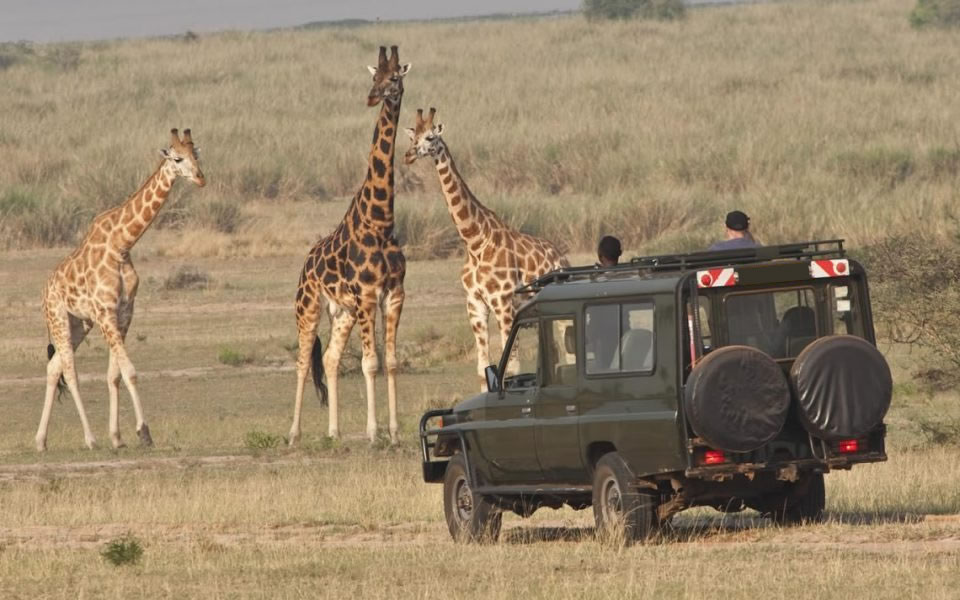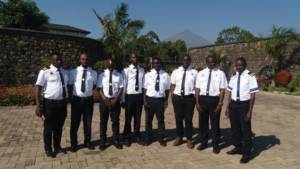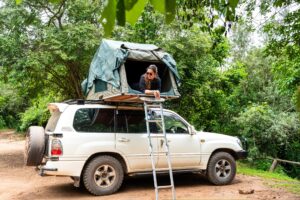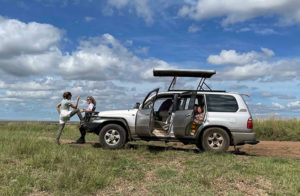Top Tips For A Perfect Akagera Self Drive Safari Adventure

An Akagera self drive safari adventure is a thrilling and deeply personal way to experience Rwanda’s only savannah park. Unlike a guided tour, you have the freedom to explore at your own pace, linger at a lion sighting, or simply soak in the vast, beautiful landscapes. However, this freedom comes with a need for careful preparation and an understanding of the park’s unique environment.
This in-depth guide provides essential tips to ensure your self-drive safari in Akagera national park is not only unforgettable but also safe and well-planned.

1. The Right Vehicle is Non-Negotiable
This is perhaps the most critical decision you’ll make. Akagera’s roads, particularly in the northern sector and during the wet season, can be challenging.
- A 4×4 is highly recommended. A sturdy four-wheel-drive vehicle, such as a Toyota Land Cruiser, provides the ground clearance and traction necessary to navigate the rough dirt roads and potential mud.
- Check your vehicle’s condition. Before you enter the park, ensure your car is in excellent working order. This includes checking tire pressure, having a spare tire and a jack, and knowing where the emergency contacts are for your rental company.
- Fill up the tank. There are no fuel stations inside Akagera National Park. Make sure you have a full tank of gas before you enter, especially if you plan to drive the full length of the park from south to north.
2. Planning Your Itinerary and Navigation
Akagera is a large park, and a successful self-drive requires a clear plan.
- Download offline maps. Cell service can be spotty to non-existent inside the park. Download offline maps (Google Maps or Maps.me) of the area before you go. The park reception will also provide you with a map and can highlight a recommended route, which is invaluable.
- The South to North Route. The standard and most popular route is to enter through the southern gate (Mutumba Gate) and drive all the way north, exiting through the northern gate. This is a full-day commitment and will take you through a variety of ecosystems, from wetlands to open plains.
- Consider hiring a guide. While it’s a “self-drive” safari, you can still hire a knowledgeable park guide at the reception for a fee. They are a game-changer. Guides have a keen eye for spotting animals you might miss and can share insights into animal behavior and the park’s history. They also have a good idea of where animals have been seen recently.
3. Park Rules and Safety Regulations: Your Top Priority
Adhering to park rules is crucial for your safety and the preservation of the wildlife.
- Stick to the designated tracks. Off-roading is strictly prohibited and can result in hefty fines. It also damages the fragile ecosystem and puts you at risk of getting lost or stuck.
- Maintain the speed limit. The speed limit inside the park is 40 km/h. Driving slowly is not just about safety; it also gives you a better chance of spotting wildlife and avoids startling the animals.
- Do not get out of your vehicle. Except in designated picnic areas, viewpoints, or campsites, you must remain in your vehicle at all times. Wild animals, even herbivores like buffalo and elephants, can be unpredictable and dangerous.
- Maintain a safe distance. Never get closer than 10 meters to an animal. This is especially important for dangerous species like elephants and buffalo, which can charge if they feel threatened.
- Do not feed the animals. Feeding animals can make them lose their natural instincts and become dependent on humans, which can lead to aggressive behavior.
- Gate Hours. The park is open from 6:00 am to 6:00 pm. All day visitors must exit by 6:00 pm.
4. Maximizing Your Wildlife Sightings
A self-drive safari requires patience and a sharp eye. Here’s how to increase your chances of a great sighting.
- Go during the dry season. The dry seasons (June to early September and December to February) are generally the best for wildlife viewing. The vegetation is less dense, and animals congregate around water sources, making them easier to spot.
- Start early or stay late. Animals are most active during the cooler parts of the day—dawn and dusk. An early morning start can increase your chances of seeing predators like lions and leopards, as they are often more active before the midday heat.
- Look near water sources. The lakes and rivers are hotspots for hippos, crocodiles, and a wide variety of birds.27 These areas are also where many animals come to drink.
- Listen to the sounds of the bush. The alarm calls of antelopes or the rustling of bushes can be an indicator of a nearby predator.
- Be patient. Don’t rush from one point to another. Sometimes the best sightings happen when you stop and simply watch.
5. Essential Packing for Your Safari
Your self-drive adventure requires a few key items to ensure comfort and preparedness.
- Binoculars and a good camera. These are a must for getting a closer look at distant animals and capturing those incredible moments.
- Water and snacks. Pack plenty of water and some snacks for the day. There are limited options inside the park.
- Sun protection. The African sun is strong. Bring sunscreen, a hat, and sunglasses.
- Appropriate clothing. Wear neutral colors like green and brown that blend in with the environment. Avoid bright colors, especially red, which can attract tsetse flies.
- First-aid kit. A basic kit with essentials is always a good idea for any minor scrapes or ailments.
- Cash. While some places may accept cards, it’s always wise to carry some Rwandan Francs for any unexpected expenses.
By following these tips, you’ll be well on your way to a memorable and rewarding self-drive safari in Akagera National Park, giving you the freedom to create your own unique and unforgettable African adventure.
To book a rental car for a self-drive or driver-guided tour in Akagera park- simply contact us now by sending an email to info@rentadriveruganda.com or calling us on +256-700135510 to speak with the reservations team.




